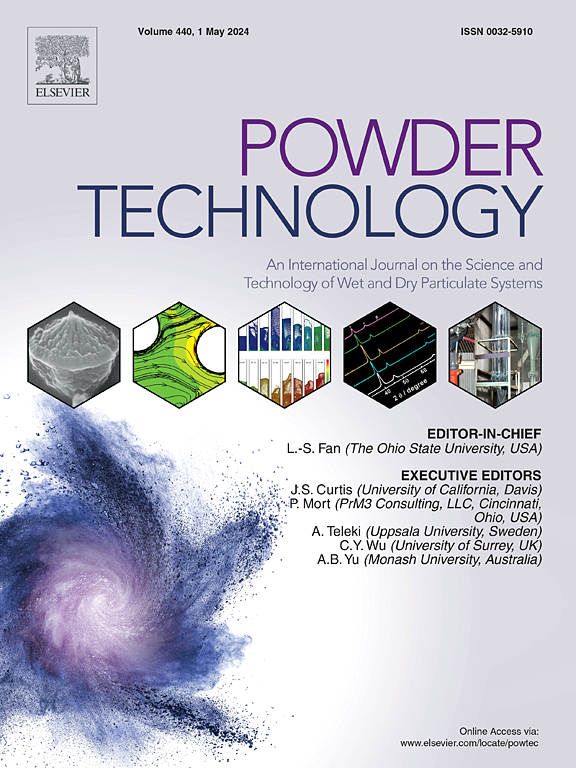Two novel semi-analytical coefficients of restitution models suited for nonlinear impact behavior in granular systems
IF 4.6
2区 工程技术
Q2 ENGINEERING, CHEMICAL
引用次数: 0
Abstract
This study proposes two novel semi-analytical coefficients of restitution (CoR) models to predict nonlinear impact behavior in granular systems. The models address energy loss at the end of the compression phase, redefining a characteristic length to enhance the equation of motion for colliding particles. The first, the inverse CoR model, derives from the inverse collision approach, introducing a length parameter for its analytical solution. The second, the energy CoR model, is proposed by integrating the damping force in conjunction with the energy conservation principles. Both models are semi-analytical since the characteristic length is numerically determined. Despite differing in derivation, both models account for initial impact velocity and material properties. Comparative analysis highlights their advantages over existing models, with validation through experimental data. Simulations confirm that the models yield accurate predictions for both metal and nonmetal contacts, at high and low impact speeds.

适合于颗粒系统非线性冲击行为的两种新的半解析系数恢复模型
本文提出了两种新的半解析恢复系数(CoR)模型来预测颗粒系统的非线性冲击行为。该模型解决了压缩阶段结束时的能量损失,重新定义了特征长度,以增强碰撞粒子的运动方程。第一种是基于逆碰撞方法的逆CoR模型,引入了长度参数作为解析解。第二,将阻尼力与能量守恒原理相结合,提出能量CoR模型。两种模型都是半解析的,因为特征长度是数值确定的。尽管推导不同,但两种模型都考虑了初始冲击速度和材料特性。对比分析突出了其相对于现有模型的优势,并通过实验数据进行了验证。模拟证实,该模型对金属和非金属接触、高和低冲击速度都能做出准确的预测。
本文章由计算机程序翻译,如有差异,请以英文原文为准。
求助全文
约1分钟内获得全文
求助全文
来源期刊

Powder Technology
工程技术-工程:化工
CiteScore
9.90
自引率
15.40%
发文量
1047
审稿时长
46 days
期刊介绍:
Powder Technology is an International Journal on the Science and Technology of Wet and Dry Particulate Systems. Powder Technology publishes papers on all aspects of the formation of particles and their characterisation and on the study of systems containing particulate solids. No limitation is imposed on the size of the particles, which may range from nanometre scale, as in pigments or aerosols, to that of mined or quarried materials. The following list of topics is not intended to be comprehensive, but rather to indicate typical subjects which fall within the scope of the journal's interests:
Formation and synthesis of particles by precipitation and other methods.
Modification of particles by agglomeration, coating, comminution and attrition.
Characterisation of the size, shape, surface area, pore structure and strength of particles and agglomerates (including the origins and effects of inter particle forces).
Packing, failure, flow and permeability of assemblies of particles.
Particle-particle interactions and suspension rheology.
Handling and processing operations such as slurry flow, fluidization, pneumatic conveying.
Interactions between particles and their environment, including delivery of particulate products to the body.
Applications of particle technology in production of pharmaceuticals, chemicals, foods, pigments, structural, and functional materials and in environmental and energy related matters.
For materials-oriented contributions we are looking for articles revealing the effect of particle/powder characteristics (size, morphology and composition, in that order) on material performance or functionality and, ideally, comparison to any industrial standard.
 求助内容:
求助内容: 应助结果提醒方式:
应助结果提醒方式:


